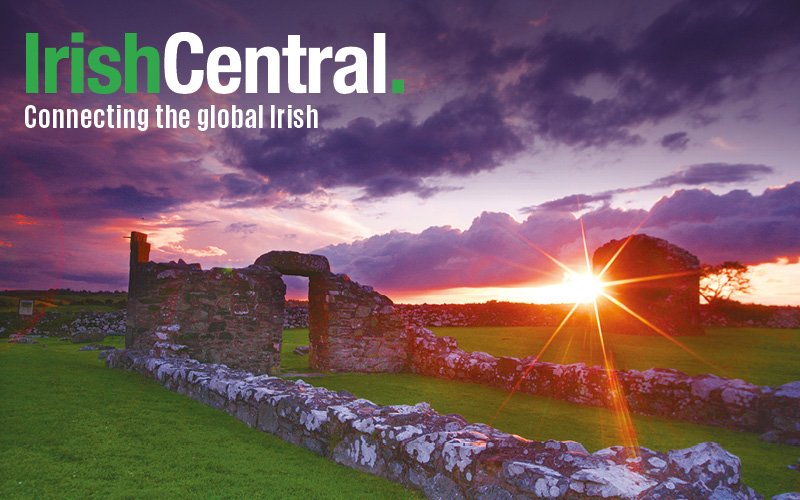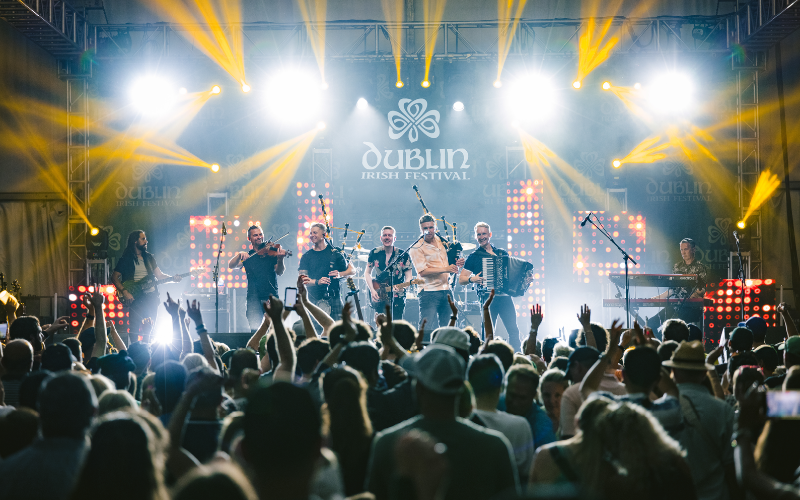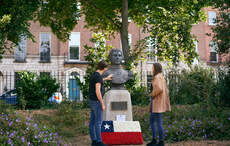Who was the first European to discover the Americas? Contrary to popular opinion, it may not have been Christopher Columbus. In fact, it may well have been St. Brendan - an Irishman who hailed from Co. Kerry.
Kerry is one of the loveliest of Ireland's counties and if you have not yet paid it a visit, it might now be time for you to undertake St. Brendan's journey in reverse. Do this illustrious saint who was known "the Navigator" the honor of visiting his beautiful home place.
A county of mountainous landscapes and dramatic coastlines, where ancient historical sites sit alongside post-Celtic-Tiger modernity, Kerry is what many people imagine Ireland to be. Indeed, so superior is its splendor that it's often referred to as the Kingdom - the high seat of all of Ireland.
So, where should you start your explorations of Kerry?
Where better than in St. Brendan's own birthplace of Ardfert in the north of the county? This village and its surrounding areas are rich in archaeological heritage - the most impressive of which is St. Brendan's Cathedral, a medieval structure built in memory of the village's most revered son.
Further north is Ballybunion, once a thriving holiday destination that drew hundreds of Irish families to its beautiful beach. Though its allure has faded, this village still has its attractions, including a 14th-century castle, great natural beauty, and a golf course that's listed among the top ten in the world (just ask Bill Clinton, who played there).
Ten miles down the road, you'll come upon the bustling town of Listowel. A cultural Mecca of sorts, this town has produced stellar writers such as John B. Keane and Bryan McMahon and it celebrates this literary heritage with a writers' festival every June.
Listowel has much more to boast of too. Its castle looms over the town center ,and the acclaimed St. John's Theatre and Arts Centre right in the heart of the town square stages the best in Irish and international plays, music and exhibitions.
Once you've had your fill of cultural activities, you can pay a visit to Tralee, Kerry's largest town. With its abundance of high-quality hotels, Tralee can make a good base for exploring Kerry.
It also has attractions of its own, such as Ireland's second-largest museum, Kerry the Kingdom in the Ashe Memorial Hall. This tells the story of the county from 8000 B.C. to the present day, using a mixture of audio-visual displays and an evocative re-creation of the medieval town streets, complete with nose-wrinkling stench.
From Tralee, you should head west along the Dingle Peninsula, one of the most stunning stretches of scenery in all of Ireland. Approach the town of Dingle via the northern route and if you've got the time, allow yourself a few stops on the way.
First, there's the small village of Castlegregory. Surrounded by pristine golden beaches, this is an ideal place to practice your surfing.
Next up is the small fishing village of Brandon. Here, you can enjoy a pint and a bowl of soup on the pier; hopefully while you watch a local crew take a currach (a traditional boat) to the water in preparation for the summertime regattas.
From here you can climb Mount Brandon - named for our aforementioned saint who established a small monastic settlement on its wind-battered summit - over to the more touristy side of the peninsula.
But you may prefer to continue driving and, assuming that you do, your route will take you along the Conor Pass, a winding road carved into the cliff sides and overlooking valleys hewn during the last Ice Age. Pull in at the roadside waterfall and climb up to Peddler's Lake - named for a traveling tradesman who lost his life and wares to brigands nearby. Have no fear though. This happened long ago.
The town of Dingle (or Daingean) lies at the end of the Conor Pass road. A seaside town of pretty and brightly-colored houses, Dingle is known for its traditional music sessions, its seafood restaurants, Fungi its gregarious dolphin and the craic.
While you're in town, you should call in for a singsong at John Benny's Pub on the quayside. Don't be afraid to join in if the mood takes you.
Take a trip out to see Fungi (the resident dolphin) in the bay. And spend hours strolling the streets, visiting the many craft shops run by local artists.
You're in for a treat when you venture west of Dingle. The loop that takes you around the rest of the peninsula is known as the Slea Head Drive and it's very impressive. There are jagged cliffs, crashing waves, rolling green hills, historical sites aplenty and lots of friendly locals to set you straight if you get lost on the twisting roads.
If the day is fine, plan a trip to the Great Blasket Island. Inhabited until the 1950s, this island seems to exist outside of time, its abandoned houses crumbling under the weight of memories.
The Great Blasket was home to a unique community of people who lived the most traditional of Irish lives - self-sufficient, bursting with oral history and folklore and bound to the hard-won wisdom of the past. Several islanders captured their lives in memoirs and stories.
You can't help but be struck by the poignancy of all of this as you walk around the island and peer into the ruins of former homes. Back on the mainland, you can learn more about their history at the Blasket Centre. Here, audio-visual displays will reveal all you need to know about a bygone way of life.
You can travel even further back in time with a visit to nearby early Christian sites Riasc and Gallarus. Riasc is the remains of a small monastic settlement complete with intriguingly engraved standing stones, while Gallarus Oratory is an 8th-century church made entirely of stone, baffling builders to this day with its lack of mortar.
If you're still in St. Brendan mode, you can stop off at Brandon Creek, a picturesque spot at the foot of Mount Brandon. St. Brendan apparently departed for America from this very location.
Nearby is the Gaeltacht (Irish-speaking) village of Ballyferriter, or Baile an FhirtZaraigh. Here, you'll hear the language being spoken in the shops, in the church and in the pubs. It's the ideal place to come if you're hoping to attend an Irish-language course.
After all this sightseeing, you'll eventually find yourself back in Dingle. At this stage, some refreshment might be in order and what could be better than an ice cream from Murphy's? Run by two New York brothers of Irish heritage, this ice cream shop is known all over Ireland for its mouth-watering range of ice creams and sorbets.
When you finally decide to leave Dingle, be sure to take a different route than the one you approached the town by. This time, go towards Killarney.
If you've got the luxury of time to spare and the sun happens to be shining, stop off at Inch Beach. Its name is misleading for it's actually three miles long and very popular with surfers, walkers and water sports enthusiasts of all kinds.
After your exertions on the beach, you're bound to be feeling hungry. Hold those hunger pangs in check and head for Milltown's organic market. Attractively located in an old church, this market always has something to tempt the taste buds, especially the melt-in-the-mouth chocolate brownies.
After Milltown, continue west for the Ring of Kerry, a drive that rivals the Slea Head Drive for beauty.
The first town you'll pass through is Killorglin. If you notice any strange behavior involving goats, don't worry unduly. You've just stumbled upon Ireland's oldest festival-Puck Fair.
After Killorglin, the road brings you to Cahersiveen, the birthplace of patriot Daniel O'Connell. There's an interesting museum devoted to the man known as "The Liberator," for those of you keen to learn more about Irish history.
And having had your fill of history, you can venture out of town to the White Strand, a popular swimming spot.
Further along the country roads, you'll arrive at the bridge linking the mainland with Valentia Island. With its beehive huts, ogham stones (standing stones inscribed with an ancient Celtic script) and ruins as well as its stupendous view of the mountainous mainland, Valentia is well worth a visit.
And here's a fact for history buffs: the first transatlantic telegraph cable connected this small island off the coast of Kerry to Newfoundland.
This part of Kerry offers an abundance of attractions, one of which is the nearby Skellig Islands. Regarded by many as one of the foremost natural and historical sites in the country, a visit is not to be missed.
You can take a ferry from various locations on the mainland or from Valentia Island. It will bring you past Little Skellig, a bird sanctuary that is now home to hundreds of thousands of gannets.
As if that weren't marvel enough, the ferry will then bring you to the larger Skellig Michael. Here, you will disembark and climb 650 vertigo-inducing steps to the top, huffing and puffing as you pass by more gannets, puffins, kittiwakes and petrels.
Right at the summit, there is a monastery built by 6th-century monks who sought to live a most austere life. Their beehive-like dwellings are still intact and offer us a fascinating insight into what life must have been like here, eight miles from shore, being lashed by the waters of the often harsh Atlantic.
You are sure to breathe a sigh of relief once you're back on dry land. So, why not relax by sunbathing on one of Ireland's best beaches, nestled beside the nearby village of Caherdaniel? (Did I mention that the weather is better in Kerry thanks to the Gulf Stream?)
Derrynane Strand offers visitors two miles of gorgeous sandy beaches ringed by rolling sand dunes.
With your energy sufficiently restored, you can then head for Kenmare, one of Kerry's true gems. Here, you'll find a delightful town of colorful houses, gourmet restaurants and artisan shops surrounded by misty mountains. It's a town to explore at leisure as you soak up every one of its many charms.
Your tour of Kerry is now almost over but one final destination remains-the town of Killarney. Known worldwide for its appealing shops, bars, restaurants, music and traditionally Irish welcome, Killarney truly has something for everybody.
However, if you have to choose one highlight, it should be the surrounding national park. The scenery here is sensational.
There are the tranquil Lakes of Killarney where trout leap from the waters, the genteel 19th-century manor of Muckross House, well worth a visit in itself, the oak and yew woods with their herds of native red deer, the Gap of Dunloe with its incomparable mountain views and the delicious food available in the nearby Avoca CafZ, the Torc Waterfall and much more.
You can explore all of these sights on foot, by bike or in a traditional horse and cart. These can be rented from various locations in Killarney town.
What better way to end your trip to Kerry than clip-clopping your way through Killarney National Park?
You may remain unconvinced that St. Brendan was the first to discover America but by now, I'm sure you would like to discover Kerry. I'll see you in the Kingdom!




Comments